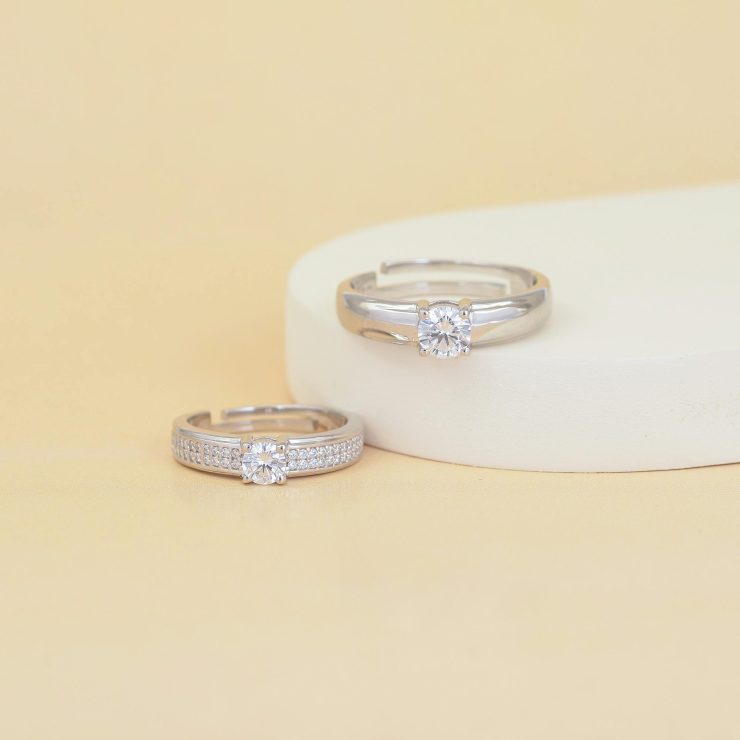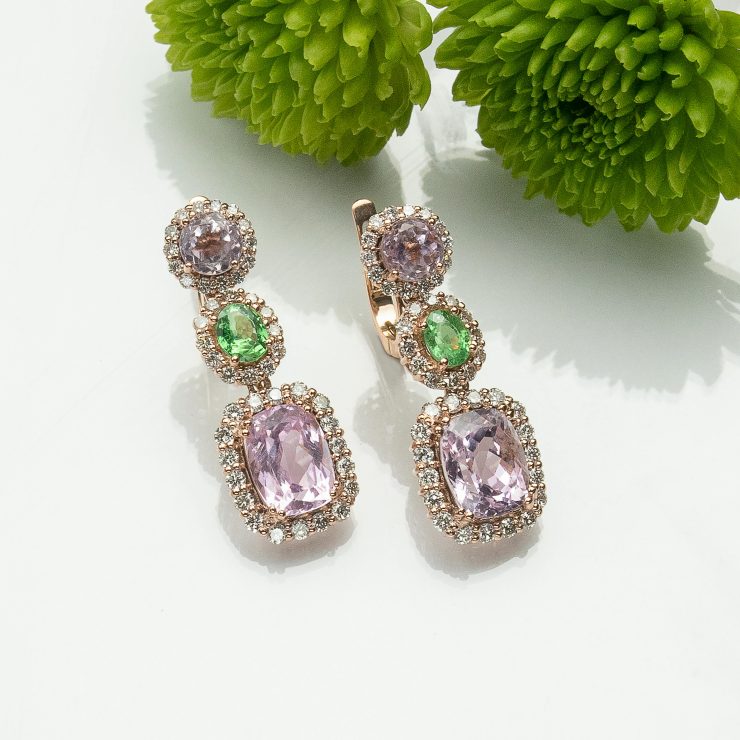Shipping second-hand lab-grown diamonds requires meticulous attention to detail to protect their physical integrity, maintain their value, and convey professionalism to the recipient. Despite their hardness, diamonds are not impervious to damage. A poorly packed stone can suffer from surface abrasions or chip when exposed to sudden shocks during transit. Moreover, improper packaging might result in loss, theft, or misidentification—especially if the diamond is being sold, appraised, or returned to a buyer or a vendor. Whether the diamond is loose or set in jewelry, secure packaging protects not only the item but also the credibility of the sender. Therefore, understanding the difference between casual and secure packaging is critical. While general-purpose bubble mailers may suffice for low-value items, lab-grown diamonds should always be packaged with specialized materials designed to withstand handling stress, environmental changes, and high-value transport protocols. From padded containers to tamper-evident materials, each layer in the packaging process serves as a barrier against potential risks.

Step-by-Step Guide to Proper Diamond Packaging
An effective diamond packaging procedure generally involves multiple protective layers, each contributing to overall security and presentation. The innermost layer should cradle the diamond securely. If the stone is loose, placing it in a gem jar with a foam insert is standard practice. For diamonds set in jewelry, a small padded box is often more suitable. This box should be sealed and labeled appropriately, including documentation such as certificates or appraisal forms, which must be kept in a separate sleeve to avoid damage or confusion. The next layer usually consists of a bubble wrap envelope or foam-padded pouch that adds shock absorption. It is critical to ensure the item cannot shift within this layer, as movement during transit increases the risk of damage. This inner package should then be placed within a sturdy, tamper-evident outer shipping box. Using double-boxing—an inner and outer box—provides an added layer of physical protection and concealment, which is especially useful for high-value shipments. All seams of the outer box should be reinforced with heavy-duty tape.
Choosing the Right Shipping Carrier and Insurance Options
Selecting the appropriate shipping carrier is as important as the packaging itself, especially when handling high-value items like lab-grown diamonds. Not all carriers provide the same level of security, tracking, or insurance options. For domestic shipments, major carriers such as FedEx, UPS, and USPS offer specialized services for valuable items, including overnight shipping and signature requirements. Some also provide insured shipping for declared high-value goods, but it’s important to review their individual policies closely—standard insurance may not cover diamonds or fine jewelry unless certain criteria are met. In cases of exceptionally high value, it may be more appropriate to use specialized logistics services such as Malca-Amit or Brinks, which cater to the diamond and precious metals industries. Insurance should always be procured based on the declared value of the item, and documentation should be retained for filing claims if necessary. Additionally, shippers should keep digital and physical records, including photos of the item before shipping, tracking numbers, and signed delivery confirmations for their own protection.
Documentation and Legal Considerations
Sending second-hand lab-grown diamonds through the mail also involves careful attention to documentation and legal compliance. For private sellers and retailers alike, including proper paperwork enhances the credibility and traceability of the transaction. At a minimum, the shipment should contain a copy of the diamond’s certification (from IGI, GIA, or a similar entity), a sales receipt or invoice, and a detailed packing slip describing the contents. If the diamond is being shipped internationally, customs forms must be accurately completed to avoid delays or legal complications. Some countries have restrictions on the import or export of gemstones, even lab-grown varieties, and failing to declare contents properly can lead to seizure or fines. Moreover, ensuring that the declared value on customs documentation matches the insured amount is crucial. Buyers and sellers should also be aware of import taxes or duties that may be levied by the destination country. Misrepresentation of contents or undervaluing for duty purposes can have serious consequences, including the loss of buyer trust and potential legal repercussions.

Presentation Matters: Enhancing Perceived Value Through Packaging
While security and compliance are top priorities when shipping second-hand lab-grown diamonds, presentation also plays a significant role—particularly if the item is being sent to a customer or prospective buyer. The manner in which a diamond is presented can greatly influence the recipient’s impression of its value and authenticity. High-quality presentation materials such as velvet or leatherette boxes, branded wrapping, or embossed documents can elevate the overall unboxing experience. Including a certificate of authenticity or grading report in a clean, professional folder can further establish trust. These elements can signal attention to detail and professionalism, both of which are especially important when selling second-hand diamonds, where buyers may harbor concerns about legitimacy or quality. A well-organized, visually appealing package helps to mitigate such concerns and reflects positively on the seller, whether it be a private individual or a commercial vendor. First impressions count, and investing in elegant yet secure presentation materials may influence repeat business or positive reviews.
Tamper-Evident Measures and Theft Prevention
In addition to basic packaging protocols, it is increasingly recommended to incorporate tamper-evident features into your shipping process to deter interference and establish a secure chain of custody. Tamper-proof packaging tapes, security seals, and RFID tags can act as strong deterrents against unauthorized access. Many tamper-evident materials show clear signs of being opened or manipulated, such as displaying “VOID” messages when removed. For higher-value diamonds, adding serialized security seals and logging the numbers for reference can make a meaningful difference. These measures not only discourage tampering but also provide valuable evidence in the event of disputes or claims. GPS-tracked shipping options are also becoming more accessible and may be worth considering for particularly valuable shipments. Furthermore, it is advisable to avoid shipping packages that openly reveal their contents; avoid using company names, logos, or descriptions that suggest the presence of jewelry or gemstones. Discretion, combined with robust security methods, helps mitigate theft risks during transit.
Tracking and Post-Shipment Protocols
Once the diamond has been packaged and shipped, effective tracking and communication become critical components of the process. Choosing a shipping service that offers real-time tracking and delivery confirmations is essential for both the sender and the recipient. As soon as the package is in transit, share the tracking number with the recipient and maintain regular contact until the item is safely delivered. For high-value items, requiring a signature upon delivery and, where available, a photo confirmation can add another layer of protection and transparency. It’s also advisable to keep a digital log of all transaction-related information including time-stamped photographs of the item pre-packaging, the packing process, shipping labels, and correspondence with the buyer. In case of any issues, such documentation can be invaluable when filing insurance claims or resolving disputes. Post-delivery, requesting a confirmation from the recipient or a short video of the unboxing can also serve to finalize the transaction securely and responsibly.
Final Thoughts: Integrating Safety and Professionalism
Successfully shipping second-hand lab-grown diamonds involves more than just placing a gem in a box and sending it off—it is a process that intertwines safety, legality, professionalism, and customer satisfaction. By adhering to layered packaging practices, selecting reputable carriers with comprehensive insurance, and ensuring accurate documentation, sellers can reduce risk and improve outcomes significantly. Presentation, while sometimes overlooked, is equally critical in creating a positive recipient experience and building trust in second-hand diamond transactions. For private individuals entering the resale market or businesses offering pre-owned lab-grown diamonds, mastering these best practices sets a standard of excellence that not only protects physical assets but also enhances brand credibility and client relationships. As demand for lab-grown diamonds continues to rise, so does the importance of proper packaging and logistics—ensuring these sustainable, valuable items are transported with the care they deserve.